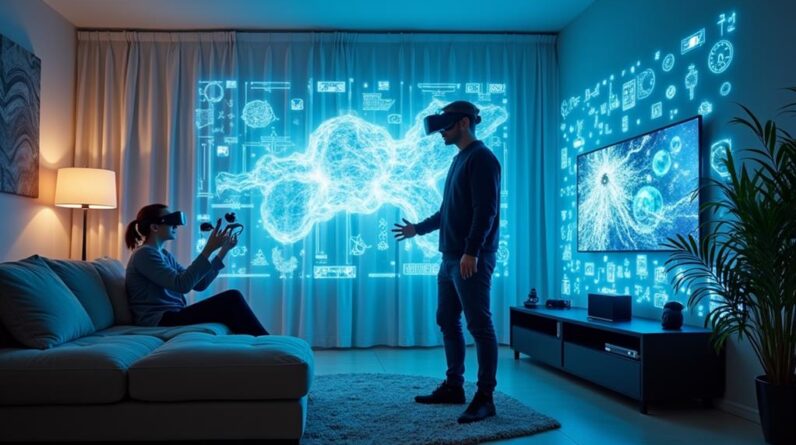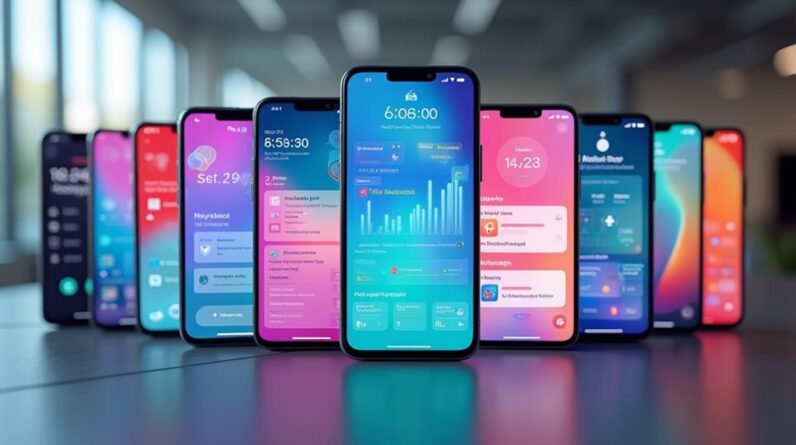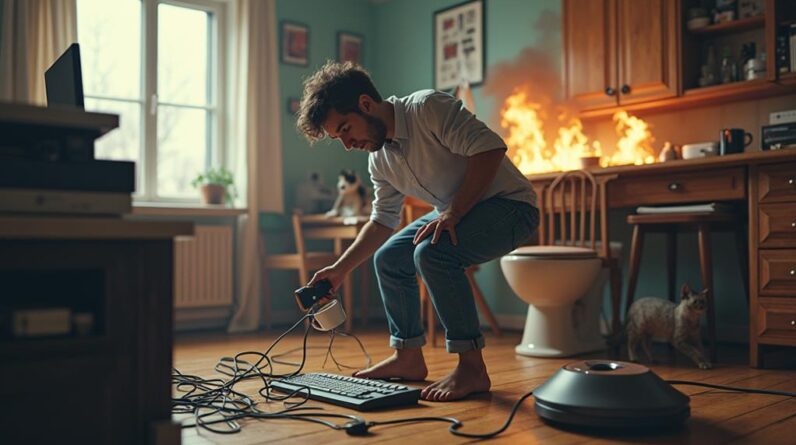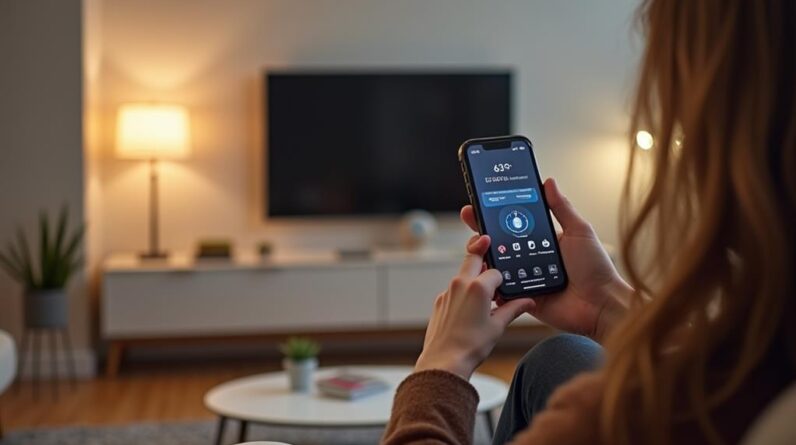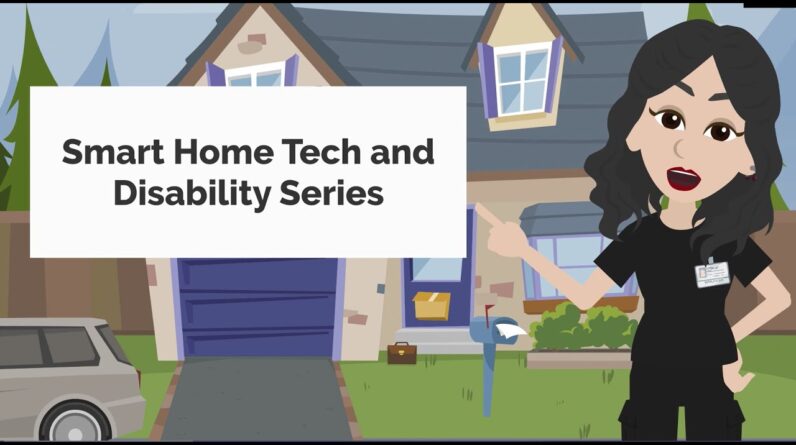
Hi there! Welcome to the first video of the smart home
tech and disability series! This video introduces smart home technology
and the possibility it holds for people with disabilities. Before we get started, what is a smart home? Terms like connected home, home automation,
and Internet of Things (IoT) are also frequently used to describe smart home technologies. While each term is slightly different from
one another, collectively they mean the devices are interconnected and can communicate with
each other. This connection allows you to monitor and
control your home environment either on your own using a smartphone or smart speaker or
automatically based on time or events. Before smart home technology, traditional
assistive technology such as environmental control units (ECUs) have been used in supporting
environmental control and daily participation of persons with disabilities in the home. However, ECUs use is often limited due to
the high cost. Thanks to the rapid expansion of the mainstream
smart home technology market there are increased opportunities for affordable alternatives
to traditional ECUs.
Given the wide and constantly growing selection
of smart home devices available, there are many ways in which these devices may increase
independence and participation for persons with disabilities who often require assistance
completing daily activities due to mobility, endurance, and cognitive limitations. Smart light bulbs, smart switches, and smart
plugs/outlets can be used to support lighting control. Smart thermostats, smart fans, smart switches,
and smart fireplaces can be used to support climate control. Smart locks, smart doorbells, and smart garage
door openers can be used to support home access and handling visitors. Additionally, an automatic door opener assistive
technology device can be integrated into a mainstream smart home system. These devices along with indoor and outdoor
smart cameras and security systems can be used to support home security and safety. Smart smoke and CO2 detectors, wearable devices,
smart speakers, and smart phones can further improve safety by supporting efforts to reach
an emergency contact or emergency services. Smart shower heads and bidets may improve
participation and allow privacy for personal tasks such as bathing and toileting for persons
with disabilities. Smart faucets, automatic soap and toothpaste
dispensers can support completion of personal hygiene tasks. Smart vacuums and mops, smart appliances,
sensors, and apps can be used to support home management and identify and find assistance
to complete home maintenance tasks.
While smart plugs can support turning on and
off household devices and appliances. Smart medication despisers, wearable devices,
and smart health devices and apps can be used to support management of health conditions
and engagement in wellness activities. Smart scales and supply trackers, smart cameras,
smart speakers/displays, smart phones, and apps can be used to support shopping. Automatic food and water dispensers, smart
pet toys, and automatic door openers can be used to support pet care. Smart TV s, streaming devices, smart speakers/displays,
smartphones and tablets, and apps available to download on these devices can support communication
with family and friends, finding information, paying bills and managing finances, coordinating
transportation, managing your calendar, creating reminders and lists, and engaging in leisure
activities such as reading, listening to music, playing games, and so much more. Persons with disabilities can control their
smart home devices using a smart speaker or display, a smartphone or smartwatch which
they can operate by touch, voice command, or assistive technology devices such as a
sip-n-puff, switch, joystick, eye gaze, or an AAC device.
Still wondering how smart home devices can
be used in your home. Let s talk to John. John is a 50-year-old man who has Multiple
Sclerosis. John s Multiple Sclerosis limits the movement
in his arms and legs, and he fatigues during prolonged activity. John s condition requires him to use a power
wheelchair and rely on the help from caregivers employed by a local agency to help him with
everyday activities. John purchased smart home devices to increase
his independence and participation in daily activities at home and controls them with
the Echo Show smart display and uses the Amazon Alexa app and smartphone. Previously, John had to leave extra keys outside
his door to give his caregivers access to his home since he relied on their help to
get out of bed in the morning. He feared his method was creating an unsafe
situation for himself. John installed smart locks, which allowed
John to unlock the door while in bed using his smart speaker.
Now John can also provide each caregiver a
specific code that can be updated weekly and works only during their designated visiting
hours. However, John felt vulnerable and was concerned
for his safety when unexpected visitors, delivery drivers, or substitute caregivers would show
up at his door, as he had no way to see who was there before opening it. So, he installed a smart doorbell which allows
John to not only see who is at the front door, but also talk with them from an app on his
smartphone to have control on who enters his home, all before he unlocks the door. Unfortunately, John had a past experience
with a caregiver who was stealing medications and only knew about this problem when he ran
out of a newly refilled prescription. John installed smart cameras helped improve
John s safety and security. John s caregivers vacuum his house at least
twice a week. However, it often was the first task pushed
aside in the event that his caregiver was running late, or he had a substitute caregiver
which left this task consistently uncompleted. John purchased a smart vacuum which allows
him to set a schedule through his Alexa to have his vacuum run throughout the week.
Additionally, John can clean up spills as
they happen rather than having to wait for his next caregiver to help because his smart
vacuum has spot cleaning features that can be controlled through his smart display. Additionally, John installed a smart light
bulb in his bedside lamp and smart tv in his bedroom that he controls using a smart speaker
that allows him to go about his nightly routine and enjoy tv as he pleases. With the installation of these new smart home
technologies, John now relies less on his caregiver to manage his household and increased
his participation and satisfaction with his daily routine. One day when turning off the lights, John
had a fall incident due to the light switch being out of reach. Thankfully, John was okay, but realized if
his caregiver wasn t still at home with him, he would not have been able to call for help. To improve John's safety, he installed a personal
emergency response system through his smart display that allows John to alert emergency
contacts using voice command.

To further improve his personal safety, John
installed smart switches, a smart thermostat, and smart blinds as accessing these devices
constantly posed as a potential fall risk due to being out of reach. Additionally, these smart devices allow John
to regulate his body temperature which is important for managing his MS further improving
John s health management. Now
that we ve seen how John uses smart home technology in his home, let s talk to Sam. Sam is a 22-year-old college student who lives
in off-campus apartments. Sam has a developmental disability which affects
her ability to learn, pay attention, and remember steps when completing simple everyday tasks
which results in her mom frequently coming up to her apartment to check in on her. Sam is frustrated with her mom s constant
supervision. However, Sam s mom has been providing Sam
assistance with her everyday tasks up until the time she has moved out and is worried
about Sam if she is not frequently supervised. Sam s mom respects Sam s ambitions for living
independently but wants a solution so she can feel comfortable about Sam living independently
that also gives Sam more independence.
As a solution, Sam and her mom purchased the
Google Home and Google Assistant on her Android smartphone, google watch, and Nest Hub smart
display. Sam set up her smart home to predominantly
use voice command to interact with her devices. Voice access allows Sam to have control anywhere
in her apartment so she does not have to remember to carry her smartphone with her all the time. Sam s devices help her perform her daily activities
because she receives verbal cues from her voice assistant, visual cues from her smart
devices on her smart watch, smartphone, and smart display, and tactile cues from her wearable
devices that give a vibration to her wrist to remind her of set reminders and notifications
to assist with her needs. Sam used to struggle with getting ready in
the morning which often resulted in her being late. However, Sam s smart lights and voice assistant
play a big role in making her morning routine successful. Sam customized her morning routine to begin
at 7:00 am when her alarm goes off. Her bedside lamp will then turn on, along
with her voice assistant stating the time, weather, and calendar appointments for the
day.
These cues allow Sam to hear her schedule
for the day and get ready accordingly. Sam set-up her voice assistant to state when
she has 30-minutes and 15-minutes left before she has to leave her apartment for the day
at 8:00 am. Sam takes several medications throughout the
day and sometimes forgets to take a dose. Sam purchased a smart medication dispenser
which dispenses the medication and send reminders to her smart devices at scheduled times to
help ensure she never misses a dose.
Additionally, a sensor in the dispenser can
notify Sam s mom if she misses a dose. Sam would often get distracted during cooking
tasks and forget to turn off lights when she left a room or lock the door when leaving
her apartment. To reduce these safety and security risks,
automated routines and sensors were introduced, allowing the front door to lock and lights
to turn off when geolocation sensors in Sam s smartphone detect she left her apartment. While motion sensors, a smart countertop oven,
and cooking apps on her smart display help her stay on task while cooking and ensure
appliances are turned off when she is done. Additionally, installing smart smoke and CO2
detectors allows alerts to be sent to both Sam and her mom s smartphones if an emergency
were to occur. As a student with a frequently changing schedule,
Sam has struggled navigating different apps to plan out her week. Now Sam tells google assistant to add upcoming
meetings and assignment deadlines to her shared to-do list and calendar apps, and her mom
can remotely assist Sam in planning out her weekly schedule.
Additionally, routines help ensure Sam receives
reminders for all upcoming events and assignments; sending visual alerts to display on her smartwatch
along with vibrations to catch her attention which has improved her ability to switch between
tasks and get to appointments on time. While visual reminders on her smart display
and phone help prioritize what assignments to work on and provide additional reminders
as needed to ensure their submitted on time. There is untapped potential for smart home
tech and how it can benefit people with disabilities with daily activities but bringing this potential
to life can take some work.
Fortunately, our series will take a deep dive
into how smart home tech can work for your specific needs. Make sure to check out the next video in our
series so you don t miss out! If you have specific topics that you would
like to learn more about, go to our satisfaction survey at the bottom of this page and let
us know what you would like to learn about! Thanks for watching!.
As an Amazon Associate I earn from qualifying purchases.



